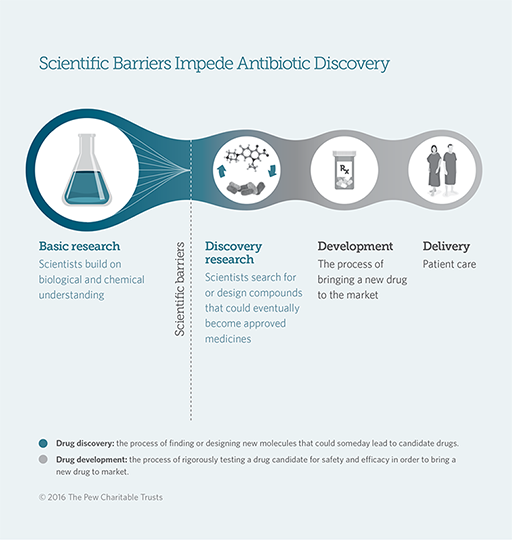4.2 Scientific barriers
The biggest barrier to new antibiotics may be a lack of investment in the basic, multidisciplinary research that underpins drug discovery and development (Figure 6).
Research has focused on identifying compounds that inhibit essential bacterial processes, for example cell wall synthesis. However, other key attributes of antibiotics are poorly understood, hampering efforts to discover new types of drug. The lack of new antibiotics to target infections caused by Gram-negative bacteria is particularly troubling because these are very difficult to treat.
Can you recall from Weeks 2 and 3 the features of Gram-negative bacteria that make them intrinsically resistant to antibiotics?
The outer membrane of Gram-negative bacteria is impermeable to many antibiotics. Inside the cell, efflux pumps transport toxic substances, including antibiotics, out of the cell.
Understanding the unique characteristics of antibiotics that allow them to penetrate cells, and to accumulate within in high concentrations, will enable focused chemical libraries to be created. It will also facilitate targeted screening programmes.
An alternative to discovering new antibiotics is to make existing drugs more effective. You will find out more about this in the next section.

